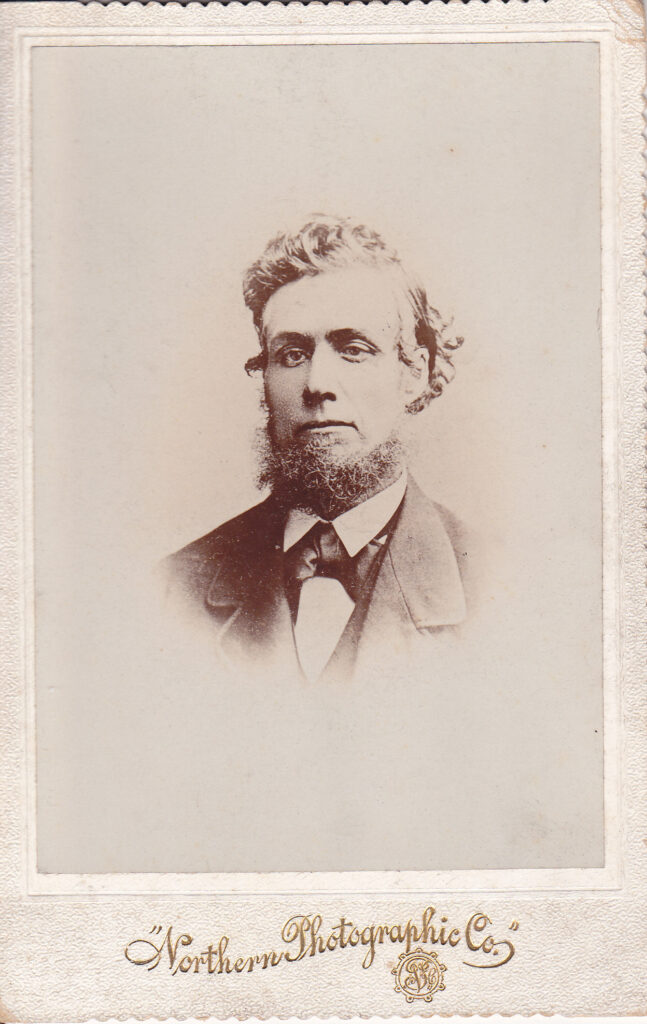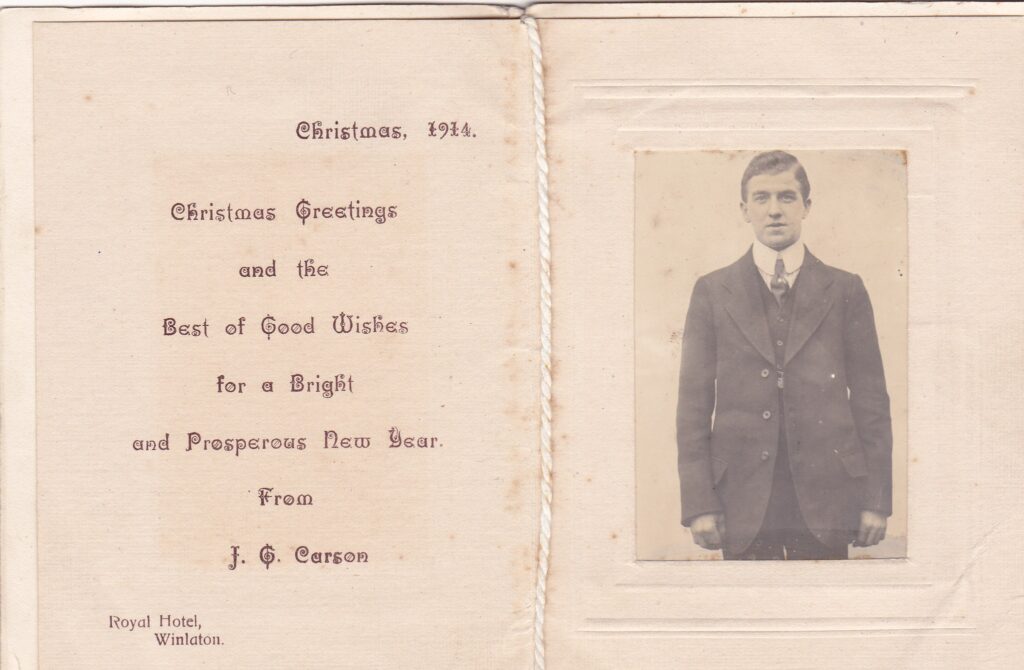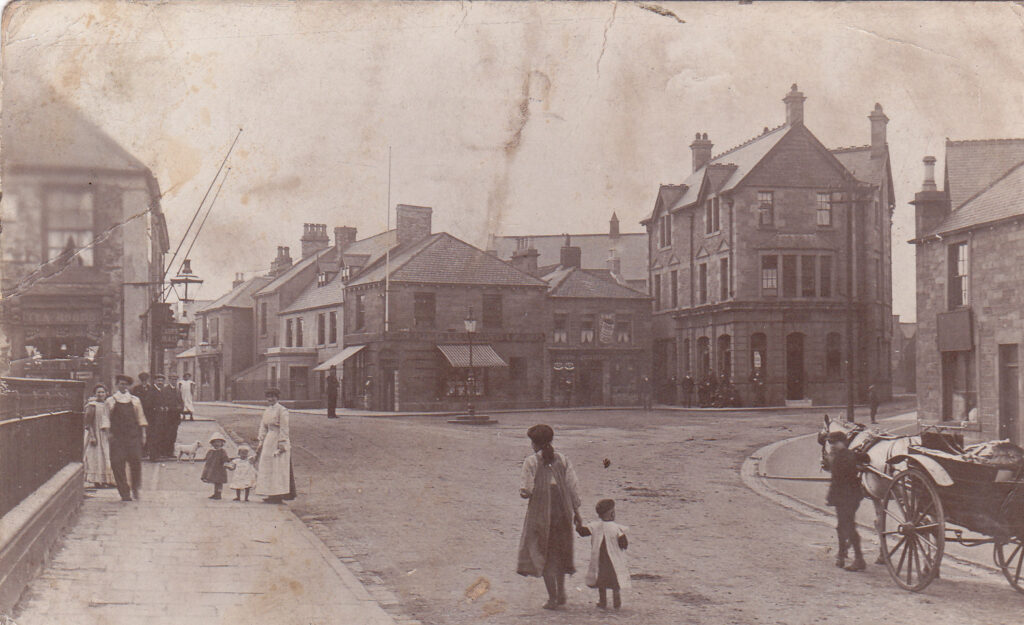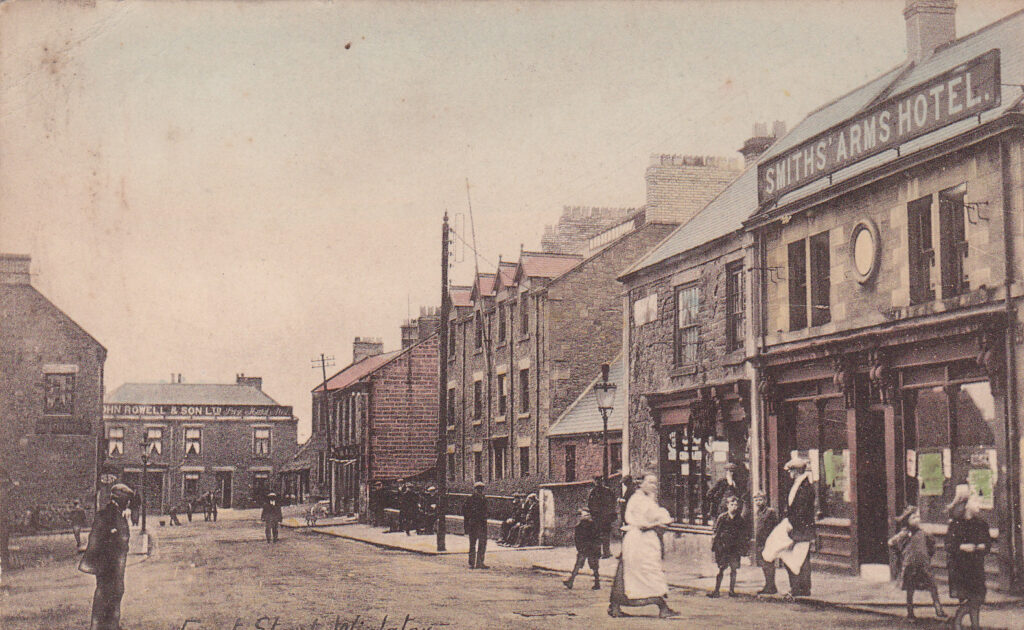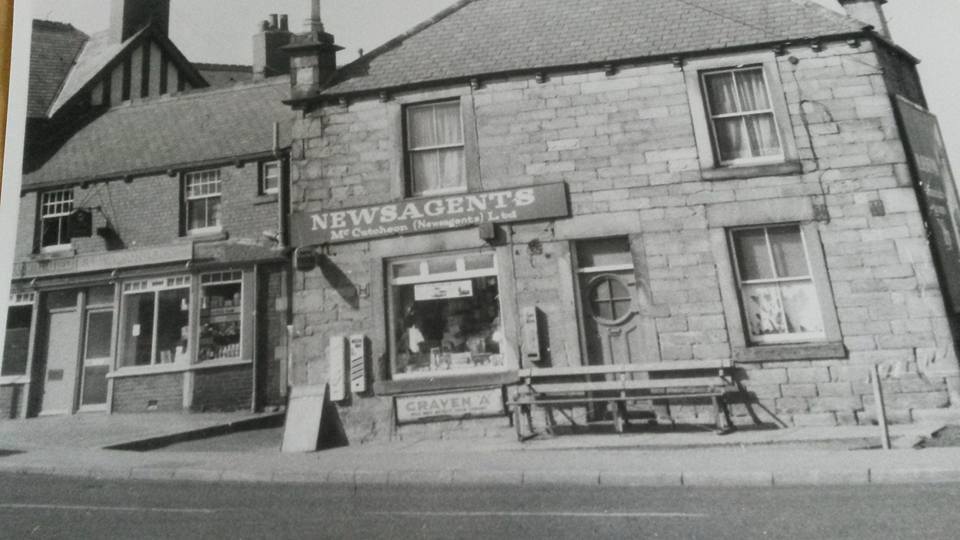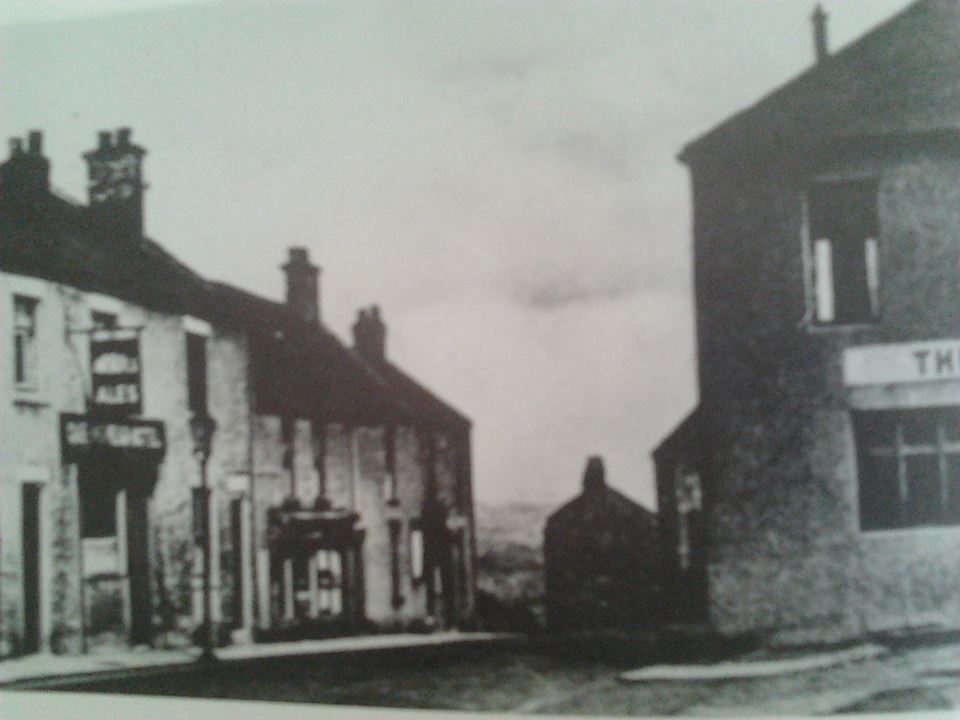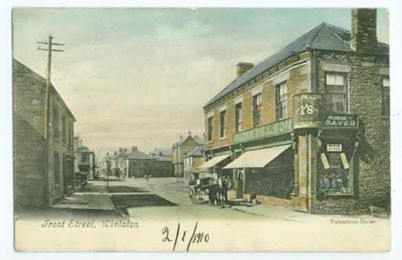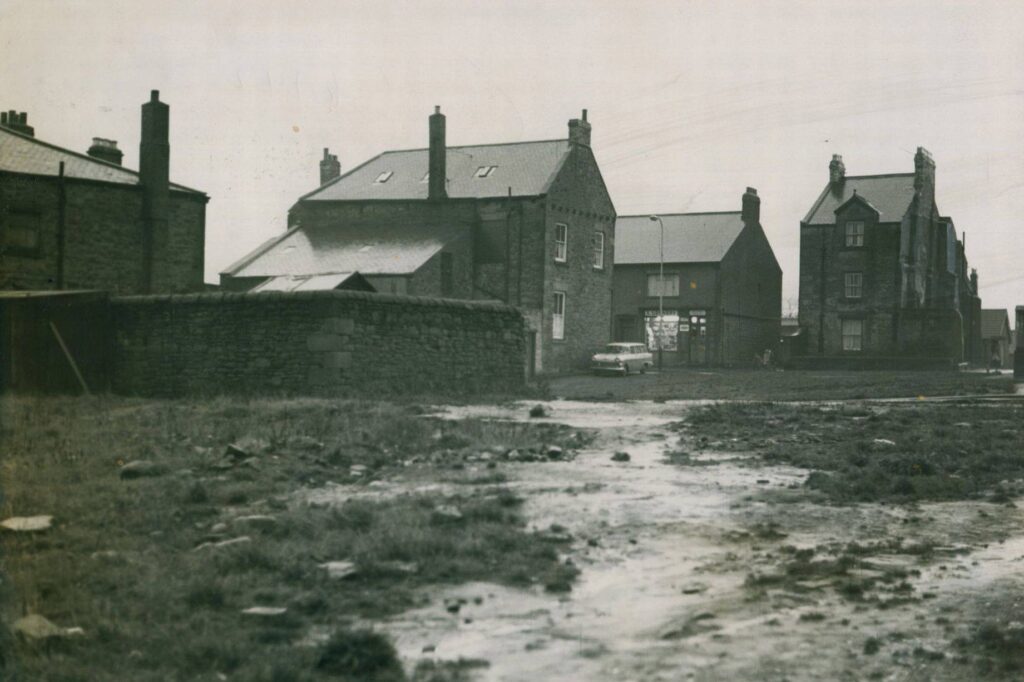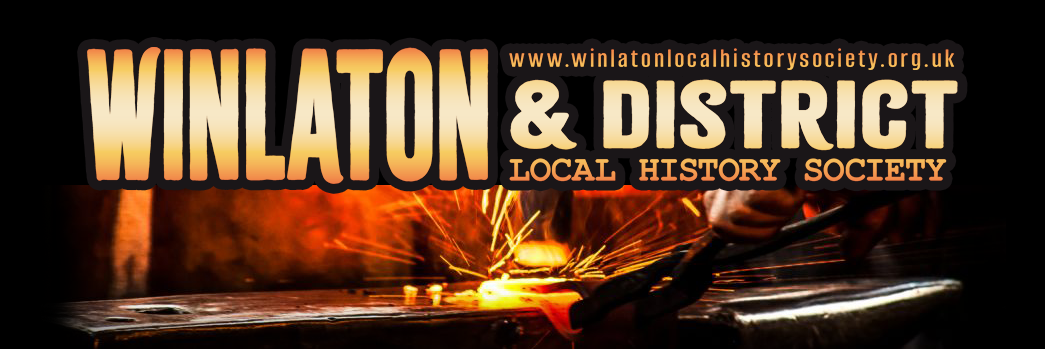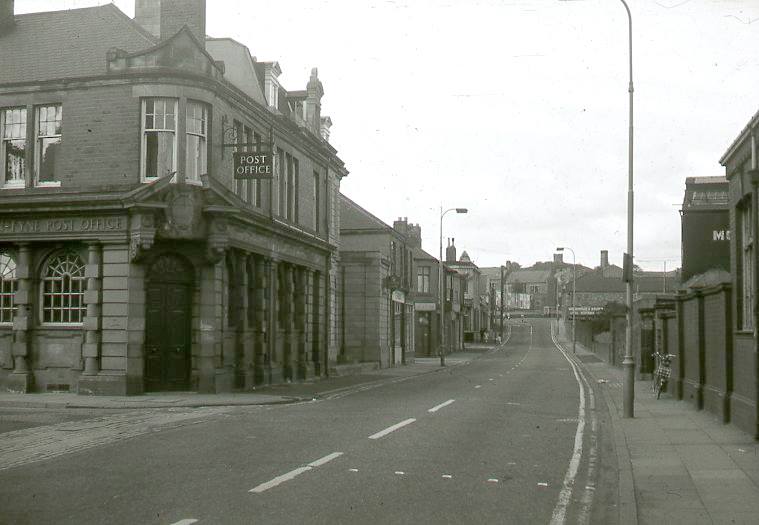The Martin’s Memories series has been reproduced with the very kind permission of Tony Martin from his posts on the Old Blaydon and Old Winlaton Facebook group.
OLD Blaydon and OLD Winlaton | MARTIN’S MEMORIES 25 | Facebook
Standing outside the Congregational Chapel and looking up Front Street, I recall a small shop by a telephone kiosk by the path that led down to Back Street. The post office came next. It was run by the Gore family and then came the Queens Head. Next there was a small shop selling wool and knitting patterns before one came to Walter Willson. I was often sent to this shop by my aunts for messages with the instructions that I should ask for Mr Metcalfe, who managed the shop.
On the other side of the street, there was the Highlander. My image of Winlaton was that it had more pubs than food shops !! Next to the Highlander, there was an entrance into Winlaton House which was owned by Joe Lockett, headmaster at Blaydon Grammar School and his wife, who was the school dentist at the baby clinic next to the school. Between this entrance and the next shop owned by Gilfillans, I can remember that I was shown a patched up wall and was told that this was the site of my paternal grandmother’s first paper shop.
Beyond Gilfillans, which was set back from the road, came Walter Rea, the butcher, where my father had served his time and worked until the mid 1950s, and next to that, the newsagent shop run by my grandmother, known to locals as Polly Martin and then by my aunts Grace and Mary. When Aunt Grace married Bert Turnbull in September 1951, she moved into Store House in St Cuthbert’s Place, Blaydon. Aunt Mary carried on with the shop for a while and then, when New Buildings was demolished, she moved to a bungalow on Garth Farm Road and the business was taken over by her cousin, Siddoway and consolidated with their shop further up the street. Walter Rea’s shop was taken over by Billy Steel on his retirement. I have been told that these shops were subsequently taken over by Tweddell, the butcher, a son of Loup Farm and the newsagent’s shop by Goundry, a painter and decorator, whom I recall lived near the bottom of Park Terrace at Bleach Green.
At Walter Willson’s shop, we turn right down a lane towards Back Street. There was rough ground on the left in front of the houses called New Buildings – one was the home of my aunts and my grandfather until he passed away in 1948 and the other by the Dixon family, whose son became a watchmaker. At the bottom of the lane lay the Royal Oak pub. An interesting piece of Winlaton history in that it was a meeting place for local Chartists in the 1830s and then acted as a Methodist chapel before the chapel was built on Front Street in 1836 and subsequently moved to Lichfield Lane in 1868. The pub was taken over by my paternal grandmother’s father, William Carson (1844-93) in the early 1880s. He came to live in Robinson Street, Blaydon from Thornhill in Dumfriesshire and worked in the Bottle Works on the Spike before becoming more interested in what went into the bottles he made. After his early death, the pub was carried on by his widow, Mary Ann Carson (1851-1931) and subsequently by their son, John George Carson, Uncle Jack (1890-1971) who moved to Wales to live with his daughter, leaving the family pub tradition – it was known locally as Carsons – to be carried on by his son-in-law, Ronald Hopper. William and Mary Ann had eight children and two of his daughters, my grandmother Mary Ann (1880-1944) and her elder sister, Grace became newsagents in the village.
Down the Back Street from the Royal Oak, were the buildings known as the Garth and almost opposite, Glendinning’s joiners shop which I have mentioned in an earlier memory. Behind the Royal Oak and New Buildings, there was an area of semi derelict land across to Collins Bank and Hallgarth.
The bus terminus between New Buildings and the next group of buildings was of newer date. On the north side of Front Street, the buildings were Siddoway’s newsagent shop, a solicitor’s office before coming to Lloyds Bank, Wilson the chemist and the Crown and Cannon. I recall visiting the solicitor in 1983-84 when I was dealing with Aunt Mary’s estate. Wilson the chemist always intrigued me as a child as an “olde worlde” chemist in the Cubey mould. I often visited the Siddoway shop with Aunt Mary or Aunt Grace. My grandmother’s sister, Grace Carson had married William Duddy in 1898, but he died in 1908, leaving her with a young family. She subsequently married John Hall Siddoway and that second marriage produced two children, George and Annie, whom older people in Winlaton will remember having the shop before it became McCutcheons.
On the other side of Front Street, there was the Club which burned down in the 1947/48 and which subsequently became a police station. Another family link with Front Street was James Phillips Jeffrey, a grocer at no. 39. He was the son of David Jeffrey, grocer and farmer of Front Street. James married Emily Martin (Aunt Emily), the niece of my great grandfather, John Shotton. I remember a large shop on this part of Front Street, owned by Jackie Walker of Tyneview Caterers and beyond that, a number of smaller shops on the way up to Brown’s Corner. I cannot recall shopping here, but Bland the cobbler and Ken Marshall, the barber seem to ring a bell.
On Sandhill, there was John Armstrong’s drapery shop which I often visited with my mother as a child as there were assistants there she knew from her time serving there – more aunties!! There was a shop next to Armstrongs, but its trade escapes my memory. Next to this was the New Inn, a very tall building which was later removed to widen the road. I remember the entrance to Sandhill from the North Street direction was very narrow. Not the place you would want to meet one of Hurst’s buses if you were a driver.
Photos:-
